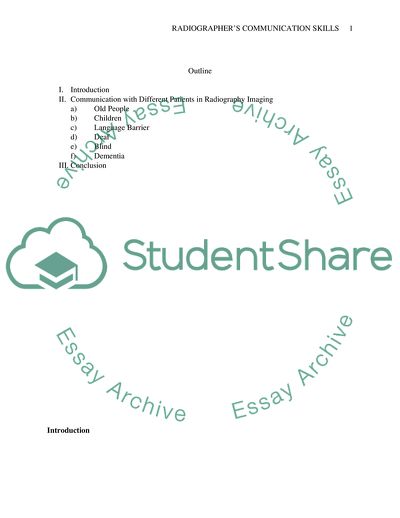Cite this document
(Good Communication Skills are Essential for Radiographer Imaging a Coursework, n.d.)
Good Communication Skills are Essential for Radiographer Imaging a Coursework. https://studentshare.org/health-sciences-medicine/1770978-paper-subject-radiography-title-good-communication-skills-are-essential-for-radiographer-imaging-a-range-of-patients-in-different-situations-discuss-this-statement-illustrating-your-answer-with-examples
Good Communication Skills are Essential for Radiographer Imaging a Coursework. https://studentshare.org/health-sciences-medicine/1770978-paper-subject-radiography-title-good-communication-skills-are-essential-for-radiographer-imaging-a-range-of-patients-in-different-situations-discuss-this-statement-illustrating-your-answer-with-examples
(Good Communication Skills Are Essential for Radiographer Imaging a Coursework)
Good Communication Skills Are Essential for Radiographer Imaging a Coursework. https://studentshare.org/health-sciences-medicine/1770978-paper-subject-radiography-title-good-communication-skills-are-essential-for-radiographer-imaging-a-range-of-patients-in-different-situations-discuss-this-statement-illustrating-your-answer-with-examples.
Good Communication Skills Are Essential for Radiographer Imaging a Coursework. https://studentshare.org/health-sciences-medicine/1770978-paper-subject-radiography-title-good-communication-skills-are-essential-for-radiographer-imaging-a-range-of-patients-in-different-situations-discuss-this-statement-illustrating-your-answer-with-examples.
“Good Communication Skills Are Essential for Radiographer Imaging a Coursework”. https://studentshare.org/health-sciences-medicine/1770978-paper-subject-radiography-title-good-communication-skills-are-essential-for-radiographer-imaging-a-range-of-patients-in-different-situations-discuss-this-statement-illustrating-your-answer-with-examples.


